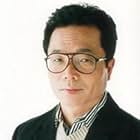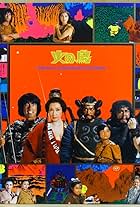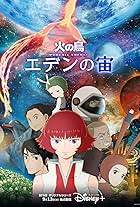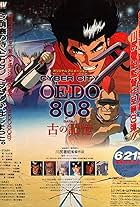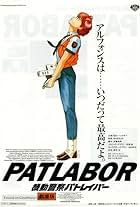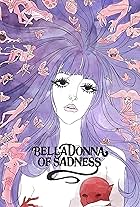The story of two men - sculptor genius Akanemaru, and former bandit Gao. Discover how the lives of the two men cross repeatedly throughout their lives, how they struggle with their own fate,... Read allThe story of two men - sculptor genius Akanemaru, and former bandit Gao. Discover how the lives of the two men cross repeatedly throughout their lives, how they struggle with their own fate, and how they are forced to compete with each other for a great honour, when karma is the ... Read allThe story of two men - sculptor genius Akanemaru, and former bandit Gao. Discover how the lives of the two men cross repeatedly throughout their lives, how they struggle with their own fate, and how they are forced to compete with each other for a great honour, when karma is the only prize.
Photos
- Gaô
- (voice)
- The Phoenix
- (voice)
- Akanemaru
- (voice)
- Buchi
- (voice)
- Hayame
- (voice)
- Kibi no Makibi
- (voice)
- (as Chikao Ohtsuka)
- Narrator
- (voice)
- Director
- Writers
- All cast & crew
- Production, box office & more at IMDbPro
Storyline
Did you know
- ConnectionsFollowed by Hinotori (1987)
- SoundtracksHi no tori
Performed by Noriko Watanabe
The story here involves two competing woodcarvers in 8th century Japan, Akanemaru, an ambitious young man seeking fame and glory, and Gao, a scruffy one-armed former bandit and killer who once slashed Akanemaru's right arm during the act of robbing him. In the time since, Gao has had a life-changing experience after a violent encounter with a beautiful and gentle female spirit with a connection to his youth and he'd given up his criminal ways to become a wandering monk in the mountains who carves statues of Buddha from wood and clay.
Akanemaru works for Lord Kibi on assignment to direct the carving of a giant Buddha statue in Nara, the region's capital, a massive project that involves 299,973 laborers. To commemorate the completion of the statue, Akanemaru is asked to compete with Gao to carve something special. They both choose to carve the Phoenix, a mystical, legendary bird associated with immortality. Akanemaru, who's waited all his life for this, has trouble finding inspiration and is haunted by the spirit of Buchi, a girl who'd been his traveling companion but had been killed by the guards who'd come to take him to work on the statue. Buchi's spirit urges him to forget about honor and status and seek out the true spirit of the Phoenix. Meanwhile Gao just sits calmly in front of his section of tree trunk and patiently waits for the spirit of the Phoenix to move him. The clear message is that even a man with a violent, murderous past can find his way to the true path of the Buddha, while a productive citizen who makes a name for himself and curries favor with the powerful and generally plays by the rules may not quite have the destiny in store for him that he'd thought.
The pace is patient and deliberate, allowing the viewer to be immersed in the richness of this ancient world and feel what the main characters are going through as they come to either accept or protest their destinies. The artwork is stunning throughout, with clean, precise lines and geometric shapes in all the details of the architecture on display. The scenes of nature are exceptionally lush and detailed as well. There is a beautiful end song sung by Noriko Watanabe that includes the line, sung in English, "You carry us on your silver wings/ to the far reaches of the universe."
PHOENIX: KARMA is the first of a trilogy of OAV (Original Animated Video) productions adapted from Tezuka's "Phoenix" manga. The follow-ups are PHOENIX: YAMATO (1987) and PHOENIX: SPACE (1987). Prior to this trilogy, there was a theatrical feature, PHOENIX 2772 (aka SPACE FIREBIRD 2772, 1980), which played at film festivals in the U.S. in 1982 and later came out on VHS, but only in an English-dubbed edition. There was also a live-action feature film directed by Kon Ichikawa called PHOENIX: DAWN (1978) that employed some animation. More recently, there has been a 2004 animated TV series based on the manga, directed by Ryosuke Takahashi.
PHOENIX: KARMA was directed by Rintaro, a master anime stylist who also directed such classics as GALAXY EXPRESS 999, ADIEU GALAXY EXPRESS 999, HARMAGEDON, DAGGER OF KAMUI, PHOENIX: SPACE, SPIRIT WARRIOR, X: THE MOVIE, and METROPOLIS.
The "Phoenix: Karma" manga story by Tezuka, now available in English, offers a more epic narrative than the anime, with a greater range of characters and many more details from the main characters' backstories included. (The manga runs 361 pp., while the film runs a compact 60 minutes.) There's also a more explicit critique of the Japanese rulers' cynical strategy of adopting Buddhism as a state religion as a means of exerting greater political control. The anime is not officially available in the U.S., but the manga volume can be widely found in comic book shops.
- BrianDanaCamp
- Dec 31, 2008
- Permalink
Details
- Release date
- Country of origin
- Language
- Also known as
- Phoenix: Karma Chapter
- Production companies
- See more company credits at IMDbPro
- Runtime1 hour
- Color
Contribute to this page








